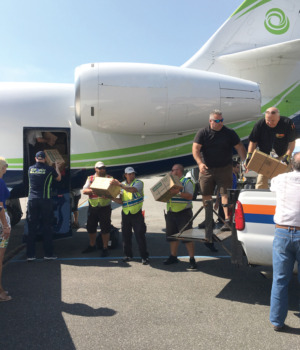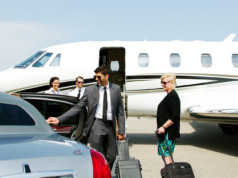
You are busy, generous by nature, and want to do good. You care about social justice and about preserving institutions important to you, your family, and your community. You want to solve pressing personal, neighborhood, or worldwide problems. You may be interested in working on behalf of a particular population, such as the elderly, veterans, or those with disabilities. At the same time, you definitely want accountability for your charitable gifts, and want to know their impact. Currently, you may make most of your charitable donations in response to personal requests from colleagues and friends, or via a corporate or private foundation, if you’ve created one.
Have You Considered Using Your Aircraft for Charitable Purposes?
Here are just four of several different ways you might be able to donate to charity using your business aircraft:
- Fly a humanitarian mission: donate the aircraft only, or aircraft plus crew, and/or you flying your own aircraft.
- Register your aircraft with a charity that arranges flights for a specific mission.
- Donate flight hours to a charity for its own use.
- If your aircraft is older, and specifically if you don’t plan to make it ADS-B compliant, consider donating it to an organization that will use it, refurbish it, or part it out.
But with more than 3,400 U.S. aviation-related charities registered with the IRS, how will you decide which to support, and how?
Among these charities are national and regional aviation museums and those seeking to preserve aviation heritage, trade associations, organizations with religious missions, and schools and colleges and programs that aim to inspire the next generation of pilots. Some serve disaster victims, rescuing people and animals. Some do other humanitarian work, transporting the sick and injured – and within that category, serving wounded veterans, children, or cancer patients.
So consider: What are your giving goals? How can you best use your aircraft to meet them? To locate an aviation-related charity that meets your goals, using the searchable database of all IRS-registered charities at Guidestar by Candid can be a good first step.
Because aviation giving can be complicated, and so much depends on your individual circumstance, it is imperative to consult with an aviation attorney, tax advisor, and/or charitable giving consultant before making your gift. For example:
- If you donate the use of your aircraft, any deduction likely would be limited to the direct cost of the flight(s). That is, you cannot deduct a portion of fixed costs such as hangar, maintenance, insurance, etc. as you would treat a business deduction.
- Your gift must satisfy the terms of both the FAA and the IRS – and they do not always agree.
- Donated flights sometimes need to meet commercial certificate requirements and aircraft inspections.
- Some states will not allow a deduction for a contribution to an organization located outside your state.
- If you are donating a flight and you are the pilot, you cannot receive any compensation. And depending on the purpose and nature of the flight, your aircraft may need to be operated under FAR part 135.
- If you plan to donate the aircraft – or aircraft parts – to a charity, and hope to get a deduction, you’ll need an appraisal, for which you’ll pay. But if the aircraft is fully depreciated (likely the case with an aircraft old enough to be donated), there may be no tax benefit to you. And be sure to treat the donation as a sale. That is, the organization should take possession of the aircraft on an “as-is” basis, so you will not be responsible nor liable for any future use.
Good legal and tax advice can help you make good use of your aircraft and your generous charitable impulse. Happy giving! BAA
Business Aviation Advisor Managing Editor G.R. Shapiro directs the Business Aviation Media Corporate Charitable Giving Program. Named as a Daily Point of Light by President George H.W. Bush, she spent 35 years in the nonprofit sector.




